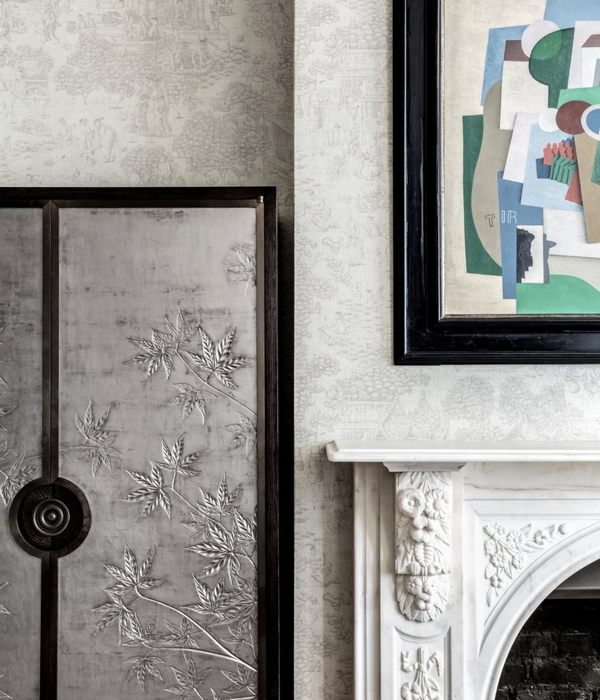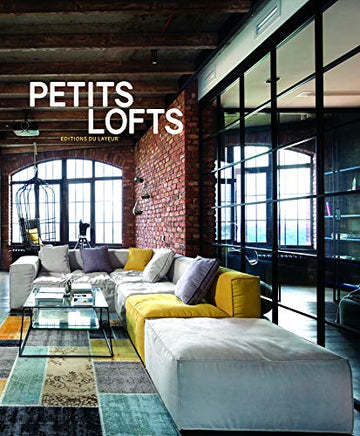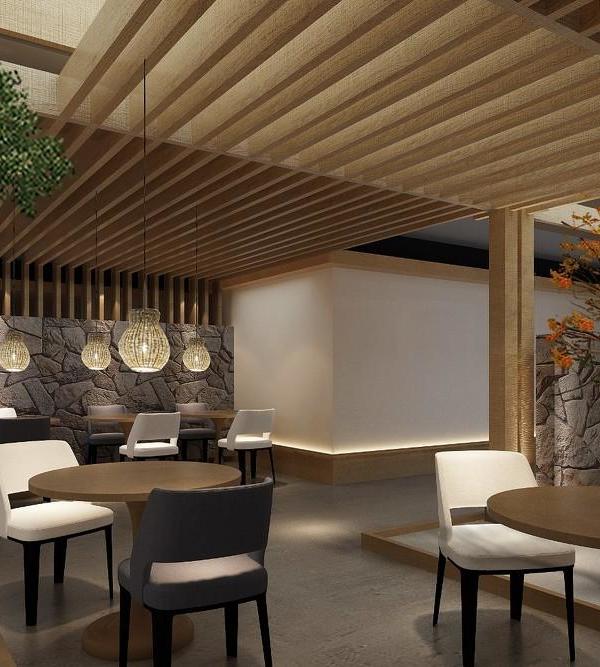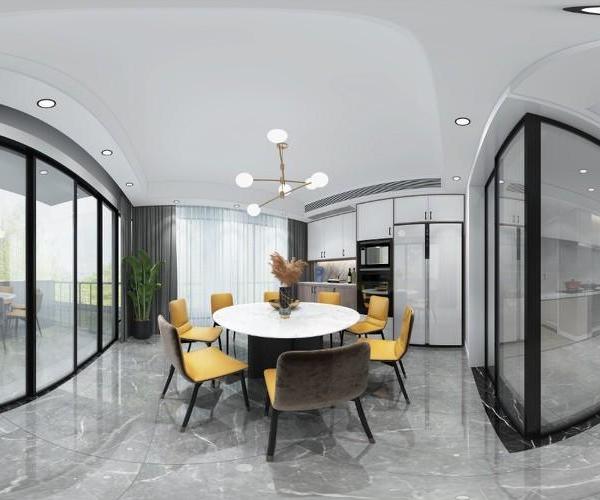▲
更多精品,
关注
“
搜建筑
”
江苏·南京丽笙精选度假酒店
创盟国际
▲项目鸟瞰 © 王可
2018年自于初识,2021年结于回望,横亘三年的人文与建造对话,构建出一段随想。
The dialogue between humanities and construction spans three years and builds up a period of random thoughts. It was a precious experience to continuously understand the landscape of the site and to integrate the design into the natural construction.
千尺阳山一碑材,斧工神摄江宁存。
山北神坛跌瀑落,气闲平望崖壁魂。
回首金陵千年史,绵延百转檐雨神。
紫气东来六朝势,丽笙园博满是春。
体量消解于地势
南京园博园位于汤山原有废弃采矿区,初到场地,满眼残潭断壁……这种无用之地恰恰成为园博园的最好命题。生态修复不仅仅是成为口号,更为建筑师在后人文时代重新诠释自然与人文的对话提供了独特的机遇,以深远诗意创造城市展园、理解场地空间态势,为方案的展开赋予最初的意蕴。
▲项目俯视 © 王可
▲项目上空俯视 © 王可
对于场地态势的找形与揣摩,项目引入了GIS的可视化技术,分析解读了崖壁、潭景与场地走势之间的关系。
通过分析场地“坡度、高度、坡向”三个核心要素的切向量与法向量,形成复合向量场,再进一步通过粒子集群智能算法求得粒子的运动轨迹。集群粒子在各参数约束于影响下产生于基地肌理强相关的几何路径,生成符合酒店消隐于环境的生长形态又融入于山水园林的形态走势的几何关系,在山水园林中实现了技术对数字化建筑找形的赋能。
Building Volume integrated into the landscape. Jiangsu Horticultural Expo Park is located in the original abandoned mining area of Tang Mountain. When you arrive at the site for the first time, it is full of relics. This useless place has become the best proposal for Expo Park. Ecological restoration is not only a slogan, but also a unique opportunity for architects to reinterpret the dialogue between nature and humanity in the post-humanistic era. During the site planning period of urban exhibition gardens, prof. Wei CHEN extracts the “remoteness” with three perspectives including a view at a high, low, and horizontal level in Linquan Gaozhi (Lofty Record of Forests and Streams) by GUO Xi in Song dynasty to create the whole garden, leading the design team to understand the site and inspire the conceptual design. Radisson Collection Resort, with a huge volume of nearly 35,000 square meters, is located on the south side of the pond, looking at the north slope cliff of the "Yang Mountain Monument", while the site base is narrow. Meanwhile, the site is low in the north and high in the south, and the west is adjacent to the urban exhibition park, so the landscape around is diverse. The variety of views and the site alignment formed a lot of temptations for creation, which was very difficult to choose. Under the constraints of the site, it is pretty difficult not only can it not stand out from the crowd, but also needs to form an independent personality and stand in the landscape garden.
▲设计动画 ©Archi-union
▲山间鸟瞰 ©是然建筑摄影
屋顶通过特征粒子点的轨道线重构及放样得到初步的直纹曲面,并通过传统建筑坡屋顶中的“举折之制”,将曲面几何用由下至上坡度逐渐变陡凹曲屋面拟合,使其既具有结构上的合理性,也形成了于中国传统坡屋顶建构方式的传承与呼应。
The project introduced GIS visualization technology to analyze and interpret the relationship between the cliff wall, the pool scene, and the site trend. By analyzing the tangential and normal vectors of the three core elements of the site: slope, height, and direction, a composite vector field is formed, and the trajectory of the particles is further obtained by the particle clustering intelligence algorithm. The clustered particles generate geometric paths that are strongly correlated with the texture of the base under the influence of each parameter constraint, generating geometric relationships that are consistent with the growth form of the hotel fading in the environment and integrating into the form of the landscape garden, which enables the technology to find the shape of the digital building in the landscape garden. The preliminary straight surface of the roof is obtained by reconstructing the orbital lines of the characteristic particle points and by drawing. The geometry of the surface is fitted by the “system of lifting and folding” in the traditional sloped roofs, which is steepened from the bottom to the top with a concave curved roof, making it structurally reasonable and echoing the traditional Chinese sloped roof construction method.
▲建筑与道路 ©是然建筑摄影
地势折叠于园景
丽笙酒店整体体量依托于大地的几何语言,15米的场地高差塑造出层叠盘绕的大地风貌,方案生成顺势而为,依托地形将场地分为南北两大功能区。
▲屋顶错落 ©是然建筑摄影
▲夜空俯视 © 王可
设定五种高差变化,以环形游园路径为线索,将客房单元、接待大唐、公共康养、餐饮娱乐、景观游园五大元素非线性有机串联。建筑整体如此便自成体系,与崖壁肌理自然对话,与周边原野遥相呼应,多向性的空间为人带来栖居于自然的二元平衡。
▲轴测分析图 ©Archi-Union
▲主入口 © 王可
同时,在场地与崖壁、池潭、跌落水系、山景、湖景复杂关系之外,还有园博园城市展园诸多小微园林胜景所构成的新园林景观。迎面而上的线性折叠界面,让柔美的城市展园的边界被重新定义,赋予丽笙酒店“大成若缺、大缺若成”的藏而硬朗的取景布局策略。其中依坡地匍匐而起的态势与折叠边界后形成的错落层次,共同与园林里的树木相互映衬,而达到建筑与环境关心的对话与和谐。
Topography folds into the garden view. The overall volume of Radisson Hotel is based on the geometric language of the earth, and the 15-meter height difference of the site creates a cascading and coiled geomorphic landscape, which is generated by the topography, dividing the site into two program areas, north, and south. The design sets five kinds of height difference changes, with a circular tour path as a clue, connecting five elements of the guest room units, reception Datang, public recreation, dining and entertainment, and landscape tour garden. The building is a self-contained system, which is in a natural dialogue with the texture of the cliff and echoes the surrounding wilderness. The multi-directional space brings a dichotomous balance between people and nature. Meanwhile, in addition to the complex relationship between the site and the cliffs, pools, and ponds, the water system, and mountain and lake scenery, there is a novel landscape composed of many small and micro gardens in the Urban Exhibition Park of the Expo Park. The linear folding interface redefines the boundaries of the urban garden, giving the Radisson Hotel a hidden and rigid landscape layout strategy of “great completion is lacking, great lack is becoming”. The slope of the hotel and the folded boundary form a staggered layer, which together with the trees in the garden reflect each other, and achieve dialogue and harmony between architecture and the environment.
▲主入口雨棚 © 王可
▲主入口俯视 © 王可
檐廊张挑于悬索
丽笙酒店的入口设置在城市展园南通园之南的3M高差的高台上,远观实为背景。当居高临下站在酒店东边的盘山公路上时,即使公路迂回层叠,入口孤树的茂叶也未有一刻被遮蔽,反而超越建筑体量凸显于视线中,营造出入口非对称的秩序感与“一树成林”的意境画卷。
▲立面生成 ©Archi-union
丽笙酒店的主入口北立面取调灰色,灰瓦下探的屋面以及灰色机器人砖构的长卷,与园博园茂密郁葱的风格底色彼此形成对映,刚柔并济,相互遥望,探究存在。入口雨棚作为秩序感的强化被强调,期待入口具有“旷远”意境的同时,仍应满足游客车辆的避雨之需,需要通畅的檐廊空间与建筑-结构一体化的构思相互博弈,最终统一于Kangaroo动力学模拟概念生形下的出挑檐廊形态。
▲机器人砖构 ©Archi-union
▲酒店大堂 ©是然建筑摄影
但形态上的最优解却由于屋面的木结构属性在建构层面举步维艰。最终通过结构师配合,在屋面上压堆载平衡找形后利用两根钢索完成了跨度28m、平均进深8m的无柱张挑檐廊结构,钢索下垂的姿态不仅优化受力,亦使檐廊产生了更为优美的意蕴。入口有意预留的无天沟挑檐,由于凹陷的形态在雨天形成水瀑跌落,与入口的孤树和水池产生了自然而优雅的场景互动。
Corridor overhung on the suspension. The entrance of the Radisson Hotel is set on a high platform with a 3M height difference south of Nantong Garden in the urban exhibition park, which is actually the background. When standing on the road to the east of the hotel, even though the road is winding, the lush foliage of the entrance tree is not hidden for a moment but is instead highlighted beyond the building volume, creating a sense of asymmetrical order and the moody painting of “a tree becomes a forest” at the entrance. The north facade of the Radisson Hotel is in gray tones, with a roof of gray tiles and a long scroll of gray robotic bricks, reflecting the lush style of the Expo Park, with a balance between soft and rigid, and looking at each other. The entrance canopy is emphasized as a reinforcement of the sense of order, expecting the entrance to be “remote” while still meeting the needs of visitors’ vehicles to escape from the rain, requiring a smooth corridor space and the idea of architectural-structural integration, finally unified in the Kangaroo dynamic simulation of the conceptual birth form of the protruding corridor. However, the optimal solution in terms of morphology was difficult to achieve due to the structural properties of the wood structure of the roof. Finally, through the cooperation of the structural engineers, a column-less gable structure with a span of 28m and an average depth of 8m was completed by using two steel cables after balancing the shape of the roof on top of the pressure stack. The intentionally reserved gutterless eaves at the entrance form a waterfall falling on rainy days due to the recessed form, creating a natural and elegant scene interacting with the lone tree and pond at the entrance.
▲独柱开花”的双曲屋面空间 ©是然建筑摄影
独柱盛开于大堂
进入丽笙酒店的大堂,项目意在延续“旷远”的穿越感,希望引导人的视线在大堂尽端透过落地窗将园博园的焦点地标“景阳楼”纳入眼底。同时在总图上,调适与延展曲折与层叠的界面,张借取景,使之也能够将蜿蜒迂回的道路水系与深谷藏幽的山湖叠翠尽收视野。
▲酒店室内泳池 ©是然建筑摄影
大堂空间呼应入口空间“一树成林”的意境与理念,通过结构力学与形态的耦合计算,实现了近2000㎡的“独柱开花”的双曲屋面空间意向。通过拓扑学的连续概念将大堂的柱梁结构一体化,用一分四的拓扑构型展开“开花柱”的概念,将整体屋面的受力通过弧形梁与柱的一体化设计将“形与力”实现一体化的找形目标。
设计通过kangaroo动力学模拟进行 “开花柱”的找形,主体受力结构由钢结构组成,主结构之间的次级曲梁柱体系由木结构介入。最终整体结构经过节点优化,实现了形与力、光与空间的融合统一,“开花柱”不仅仅作为一个结构体,其与顶部的ETFE膜材结合,亦成为室内核心空间的重要光源,自然从屋顶延伸至地面,阳光从木梁的间隙中洒入,将最初“旷远”的通透之感从入口挑檐一直延伸至室内大堂中庭。
A single column blooms in the lobby. Entering the lobby of Radisson Hotel, the project intends to continue the sense of “long-distance” traversal, wishing to guide people at the end of the lobby through the floor-to-ceiling windows to take in the focal point of the Expo Park, the “Jingyang Tower”. Meanwhile, the general plan adapts and extends the winding interface, and draws on the landscape so that it can also take in the meandering road, water system, deep valley, hidden mountain, and lake. The lobby space echoes the concept of “one tree becomes a forest” at the entrance, and through the coupling calculation of structural mechanics and morphology, the double curved roof space intention of “one column blooms” of nearly 2000 square meters is realized. The topological continuity concept integrates the column and beam structure of the lobby, and the concept of a “blossoming column” is developed by the topological configuration of one point four. The overall roof force is integrated through the integrated design of the curved beam and column to achieve the goal of integrating “shape and force” to find the shape. The design was simulated by kangaroo dynamics to find the shape of the “blossoming column”, the main force structure is composed of steel structure, and the secondary curved beam and column system between the main structure is intervened by wood structure. The final overall structure was optimized by nodes to achieve the integration of form and force, light and space. The “blossoming column” is not only a structural body but also an important source of light for the core space of the interior, naturally extending from the roof to the ground, with sunlight spilling in through the gaps in the wooden beams. Sunlight pours in through the gaps between the wooden beams, extending the sense of “openness” from the entrance eaves to the interior atrium.
山水再现于砖构
除去结构性能化建筑生形的设计研究,丽笙酒店项目依然致力于针对性能化建构的建筑机器人建造模式探索与实践,并通过科技重塑极具在地性的文化记忆。客房间的砖砌隔墙通过图像干扰技术来控制砖块的旋转角度,其产生的凹凸光影和砖缝参差可以以抽象的数字几何重塑图像信息,抽象化转译后的墙体展现出对“紫金山水”的数字化表达,重现自然与游览的双重画卷。
图像转译的视线借助了人工智能(AI)模型训练,将超过500幅在地性山水意向的图片输入,采用深度学习中的生成对抗网络(Generative Adversarial Network, GAN)对金陵山水画卷的结构、笔法进行风格迁移,并通过迭代生成与场地崖壁风貌契合的数字山水画卷。随后借助灰度离散几何的提取,将灰度参数转为建构时砖的旋转角度,进一步对山水画卷中的关键意向与要素进行建筑的可建造抽象化转译,得到最终立面的图像与数字建构效果。
Landscape reproduced in brick masonry. In addition to the design research of structural performance building biomorphism, Radisson Hotel is still committed to the exploration and practice of building robotic construction mode for performative construction, and to recreating the local cultural memory through technology. The brick partition wall in the guest room is controlled by image interference technology to control the rotation angle of the bricks, which produces concave and convex light and shadow and brick jaggedness to reshape the image information with abstract digital geometry, and the abstracted translated wall shows the digital expression of “Landscape of Zijin “, reproducing the double picture of nature and tourism. The image translation line of sight was trained with the help of artificial intelligence (AI) models. More than 500 images of the local landscape were input, and the structure and brushwork of the Jinling landscape were stylistically migrated using Generative Adversarial Network (GAN) in deep learning, and the digital landscape that fit the landscape of the cliff face of the site were generated through iterations. The landscape is generated by iterative generation. Then, with the help of grayscale discrete geometry extraction, the grayscale parameters are converted into the rotation angle of the bricks at the time of construction. The key intentions and elements in the landscape are further translated into architectural constructible abstraction to obtain the final image of the façade and the digital construction effect.
在丽笙酒店项目中,打通了机器与人在情感、思维、记忆甚至创作意图上的实现了实质上互动,这对于在这个后人文时代如何打通虚拟设计与物质智能的关联具有里程碑意义。这次意义深远的实践,用时代技术书写传统记忆,用后人文时代的新精神冲破桎梏与约定俗成,或许就是项目带来的最难忘的经历。
In the project, the interaction between machines and humans in terms of emotion, thinking, memory, and even creative intent were achieved, which is a milestone in how to connect virtual design and material intelligence in this post-humanistic era. The practice, of presenting traditional memories with the technology of the times, and breaking the shackles and conventions with the new spirit of the post-humanistic era, is perhaps the most unforgettable experience brought by the project.
项目图纸
▲爆炸分析图 ©Archi-Union
▲一层平面图 ©Archi-Union
▲二层平面图 ©Archi-Union
▲三层平面图 ©Archi-Union
▲立面图 ©Archi-Union
▲
外墙细部
项目地点:江苏园博园苏韵荟谷片区
设计时间:2018年
竣工时间:2021年
主创建筑师:袁烽
主创建筑师单位:同济大学
建筑设计深化团队:高伟哲、孔祥平等
建筑设计深化单位:上海创盟国际建筑设计有限公司 (Archi-Union)
数字建造单位:上海一造科技有限公司 (Fab-Union)
结构顾问单位:和作结构建筑研究所
室内设计单位:LWK+PARTNERS
施工图合作单位:南京长江都市建筑设计股份有限公司
施工总承包单位:中国建筑第八工程局有限公司
基地面积:24600㎡
建筑面积:34646㎡
结构形式:钢木混合结构
摄影:是然建筑摄影、王可
▼ 更多精品·
点击关注
本资料声明:
1.本文为建筑设计技术分析,仅供欣赏学习。
2.本资料为要约邀请,不视为要约,所有政府、政策信息均来源于官方披露信息,具体以实物、政府主管部门批准文件及买卖双方签订的商品房买卖合同约定为准。如有变化恕不另行通知。
3.因编辑需要,文字和图片无必然联系,仅供读者参考;
推荐一个
专业的地产+建筑平台
每天都有新内容
合作、宣传、投稿
联系
{{item.text_origin}}












